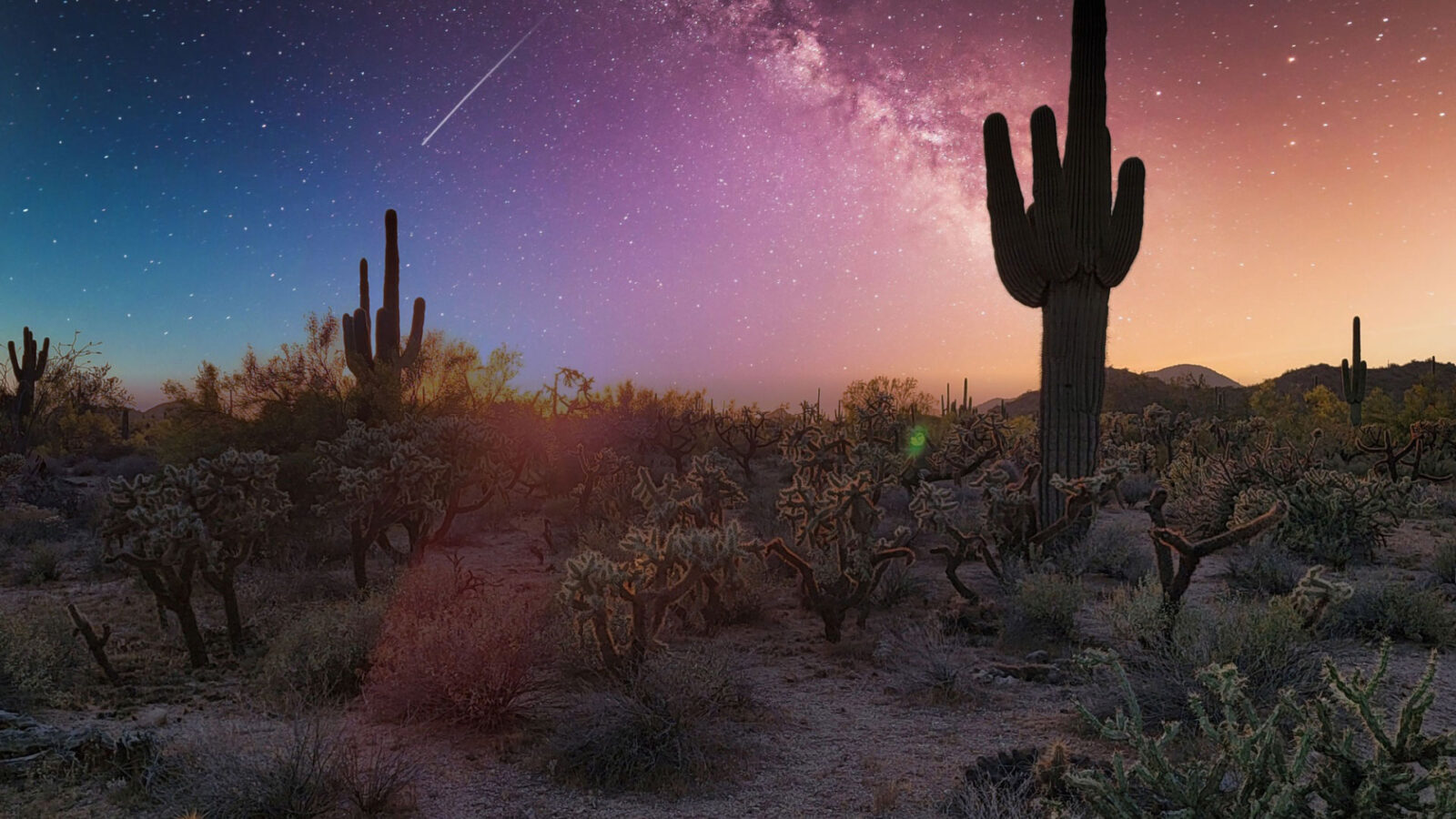Southern Arizona has always been a stargazer’s dream. With clear desert skies, limited light pollution, and a long history of astronomical research, it’s no wonder Tucson is home to world-class observatories and space science institutions. Now, thanks to a new collaborative effort across the region, stargazing in Southern Arizona is getting even more accessible with the launch of the Arizona Astro Trail.
Designed as a self-guided celestial journey, the Astro Trail offers a unique way for residents and visitors to connect with the stars—through observatories, planetariums, science centers, and some of the darkest skies in North America. Whether you’re a casual sky-watcher or a seasoned astronomer, the trail offers a guided experience that’s as educational as it is awe-inspiring.
Why Tucson and Southern Arizona?
Tucson’s location in the high desert and its active role in dark-sky preservation make it one of the best places in the country for stargazing. The city itself was the first in the world to adopt outdoor lighting codes to protect the night sky, and it’s surrounded by mountain ranges and desert plains that create perfect stargazing conditions.
Southern Arizona is home to Kitt Peak National Observatory, Mount Lemmon SkyCenter, and University of Arizona’s Steward Observatory. Add to that the region’s commitment to astrotourism, and it’s clear this isn’t just a trend—it’s part of the culture.
Introducing the Arizona Astro Trail
The new Arizona Astro Trail brings together a curated list of dark-sky destinations, educational centers, and public observatories into a single, connected experience. The goal? To make space science, astronomy, and stargazing more accessible to everyone.
The trail includes 20+ participating locations—each offering something unique. Visitors can explore a historic observatory one day and attend a telescope viewing party in a designated dark-sky park the next.
To guide your experience, the Arizona Office of Tourism released a free digital passport that can be accessed on your phone. As you check in at different sites, you’ll unlock special content and even earn rewards.
Key Stops Along the Trail
Each stop on the trail offers a unique look into our relationship with the stars, from Indigenous sky stories to cutting-edge space science.
Mount Lemmon SkyCenter, Tucson
Located atop the Santa Catalina Mountains, the Mount Lemmon SkyCenter offers telescope viewing programs using the largest public telescope in the Southwest. On a clear night, you’ll see galaxies, planets, and star clusters up close, guided by expert astronomers.
Kitt Peak National Observatory, Tohono O’odham Nation
Home to the largest collection of optical telescopes in the world, Kitt Peak offers daytime and nighttime programs. The site is located on sacred Tohono O’odham land, and part of the experience includes learning about Indigenous sky lore alongside modern astronomy.
University of Arizona’s Flandrau Science Center and Planetarium
On the U of A campus, Flandrau offers immersive shows in the planetarium dome and exhibits on everything from meteors to Mars missions. Perfect for families or a rainy day in Tucson.
Saguaro National Park
This beloved park recently earned the Urban Night Sky Place designation from the International Dark-Sky Association. That means even though it’s near Tucson, its night sky is protected and perfect for naked-eye viewing of constellations and meteor showers.
Bisbee Science Exploration & Research Center
A new addition to the trail, this small-town destination blends hands-on science with dark-sky appreciation. If you’re staying in one of Bisbee’s historic hotels, don’t forget to look up—the stars shine bright in this quiet mining town.
How to Make the Most of the Trail
- Check the moon phase – darker skies are better for viewing.
- Pack layers – desert nights can be chilly year-round.
- Bring binoculars or a telescope to enhance your view.
- Use mobile sky apps like SkyView or Star Walk to identify stars and planets.
- Look for public astronomy events at each stop.
Some locations, such as Mount Lemmon SkyCenter, require advance reservations—especially during fall and spring when skies are clearest.
Where to Stay Along the Astro Trail
Many of the Astro Trail’s locations are just a short drive from communities built by Fairfield Homes. Whether you’re in Oro Valley, Marana, Vail, or the Catalina Foothills, you’re always near a dark-sky escape.
Several Southern Arizona resorts are also leaning into the Astro Trail experience by offering stargazing events and packages. Hotels like Canyon Ranch Tucson, Loews Ventana Canyon, and El Conquistador Resort feature telescope lounges, astronomy hikes, and astronomy-themed dining experiences.
Astrotourism: The Next Big Thing
The Astro Trail isn’t just a clever tourism initiative—it’s part of a larger movement toward astrotourism. As more people seek experiences that reconnect them with nature and science, places like Tucson are stepping into the spotlight.
Astrotourism also supports conservation efforts. By promoting dark-sky friendly lighting and reducing light pollution, Southern Arizona helps preserve one of the region’s most underappreciated natural resources—the night sky.
Living Under the Stars with Fairfield Homes
At Fairfield Homes, we know the value of a desert night sky. That’s why we carefully design our homes and communities with minimal light pollution, thoughtful landscape lighting, and architecture that enhances—not competes with—the views.
Whether you’re building in the foothills or near a national park, we help you create a home that brings the beauty of the desert sky into your everyday life. From floor-to-ceiling windows to patio designs perfect for moonlit dinners, your home should be part of the Astro Trail experience.
Your Desert Sky Awaits
Tucson’s Astro Trail is more than a tourist route—it’s a celebration of curiosity, nature, and our place in the universe. If you’ve ever looked up and wondered what else is out there, this trail is your invitation to find out.
Start exploring today, and let Southern Arizona’s skies inspire your next adventure—or your next home.

